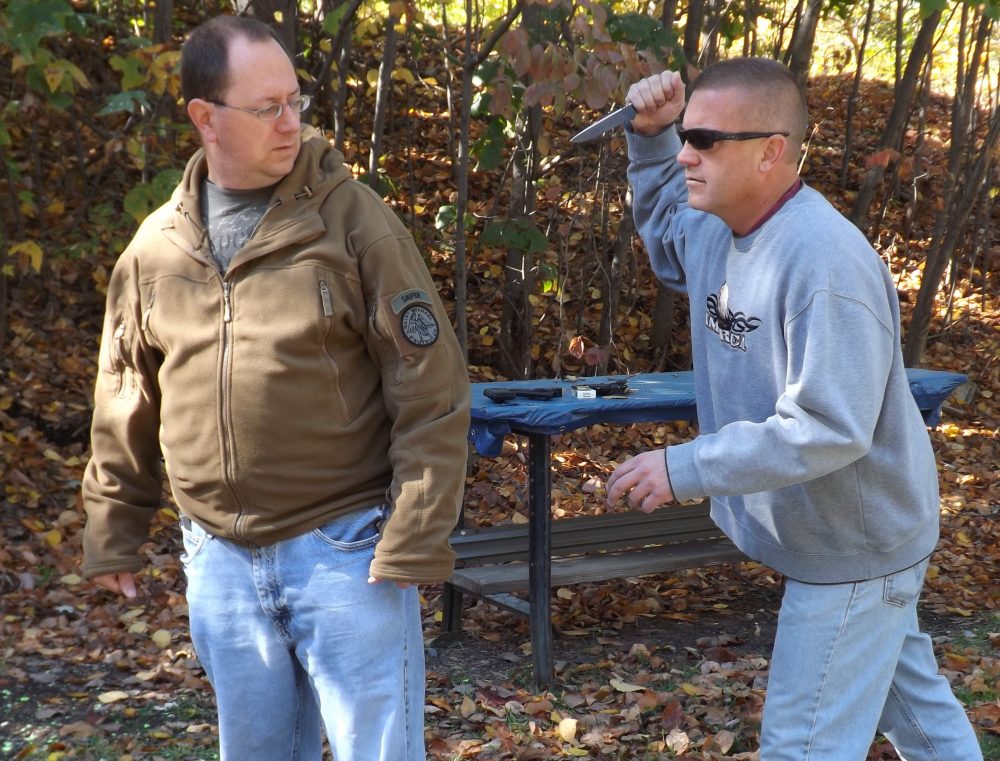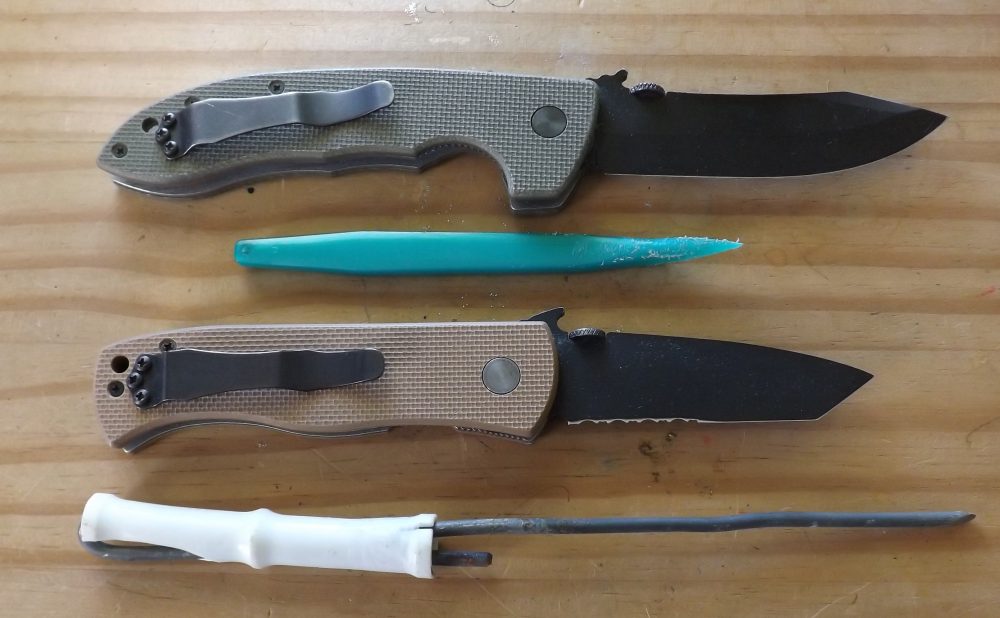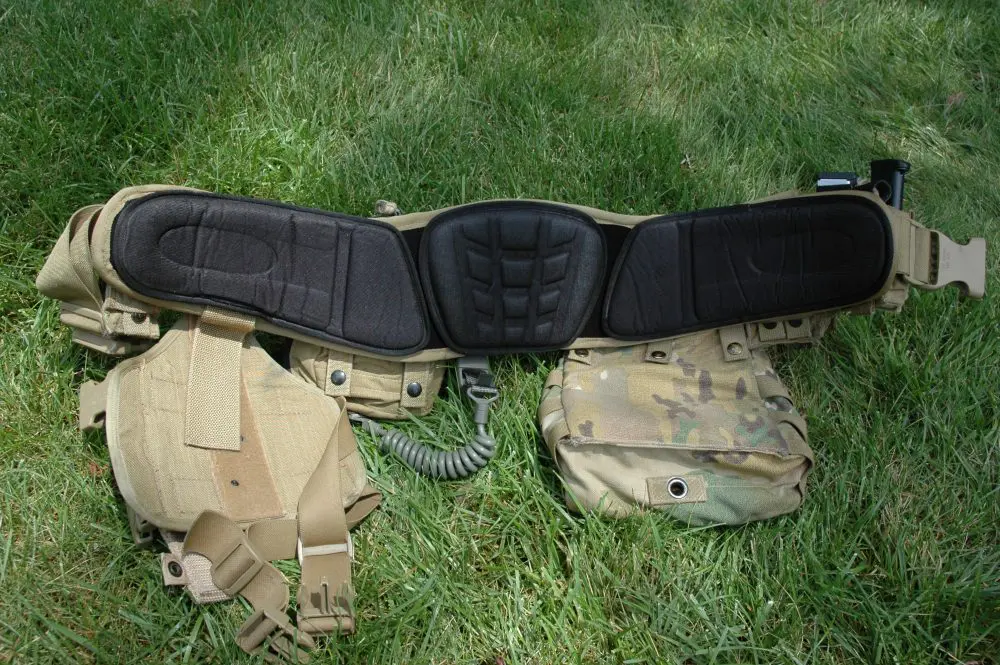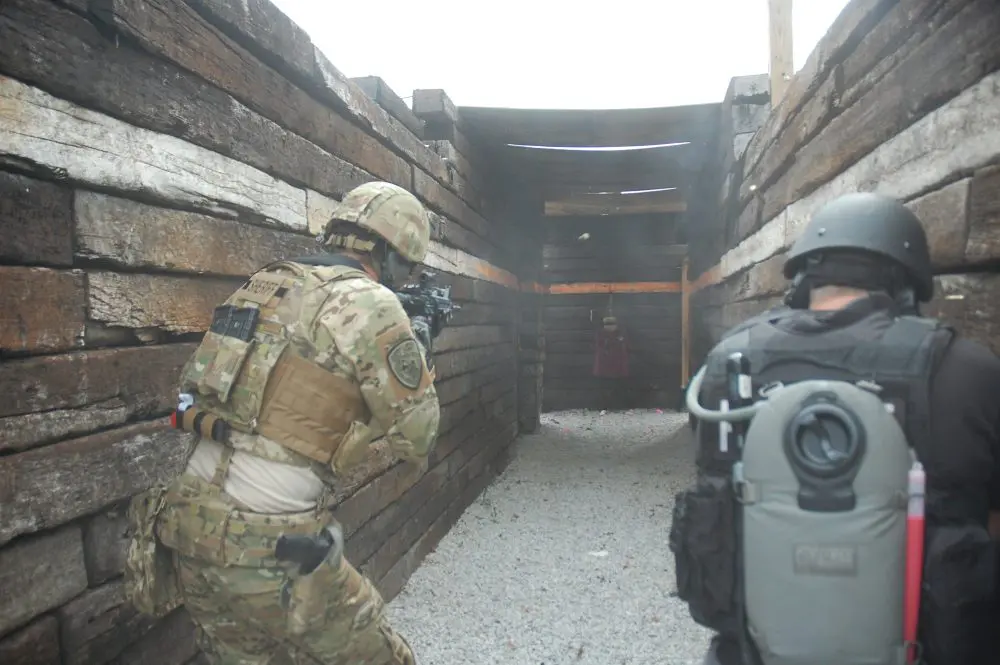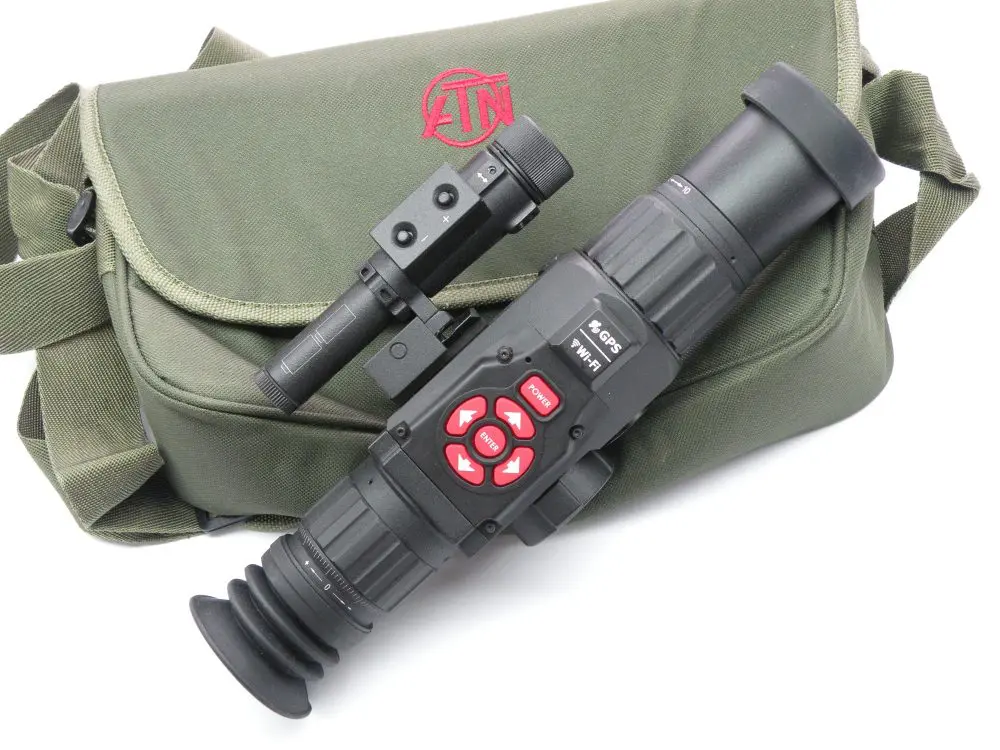There are many myths floating around regarding knives being used as weapons. This article will address many of them. Fallacies and fantasies abound, so let’s take a look.
Why do people use knives as weapons? Because they are widely available and can be obtained cheaply or for free. A knife is a terrifying weapon to face in an attack.
Attacks can come suddenly and from behind. Being armed with a firearm may not be enough to save you.
Table of Contents
MYTH #1
“If you’re involved in an edged weapon attack, you’re going to be cut.”
I’ve heard this so many times. The truth is that we may be cut, but there is no reason to assume we will be cut for certain. I’ve been involved in a few edged weapons encounters during my 24 years on duty in prisons, and do not have a single scar to prove it (and I am in no way complaining!). I believe that entering such an event expecting to be cut sabotages your mindset.
Ambush! Many edged weapons attacks come from behind.
MYTH #2
“Prison knife attacks are carried out differently than attacks on the street.”
No, not really. People—criminals included—operate in pretty much the same way. Mechanically, the human body has only so much variation, though an inmate may be a bit more experienced at using an edged weapon to attack another person.
Prison shanks—improvised edged weapons—are similar to store-bought knives, at least in concept. Shanks (sometimes referred to as “shivs”) usually have a handle, shaft/blade, and tip, just like their mass-produced counterparts. Shanks may not be as refined or as polished, but they typically get the job done just as well as a professionally made knife. They can be made from metal, plastic, wood, razor blades, Plexi-Glass, and a host of other materials at hand.
Many attacks are of the ambush type. The attacker decides to take action and plans to carry out the attack at the opportune time, often when the victim is occupied, unaware and most vulnerable. This attack often comes from behind and is generally very effective.
Facing a knife in real life is very frightening. The mental shock of it is sometimes enough to make people forget their training.
MYTH #3
“Don’t bring a knife to a gunfight.”
I wish I had a dollar for every time I’ve heard this one! Merely possessing a gun does not magically guarantee your victory. People can cover a considerable distance incredibly quickly, and the bad person with the knife “over there” can suddenly become the bad person with the knife “right here.”
Many police departments are even reconsidering the “21-foot-rule” because they are discovering that distances can be traversed so quickly that 21 feet may not be enough space to safely deal with an armed attacker. And consider that shooting an attacker does not necessarily mean he will immediately fall down and die. He may press home the attack, even if fatally injured. Adrenaline and rage can often fuel a person to exceed what we consider normal limitations.
Prison shanks compared to high-quality production knives. The shanks are simple and unrefined, constructed from a sharpened toothbrush handle, and the plastic grip handle and sharpened wire handle of a five-gallon bucket. Not fancy, but they work.
During an incident on duty, I witnessed an inmate who had been stabbed many times continue to fight vigorously for a couple of minutes until his blood pressure dropped to the point where he collapsed and died. His rage and determination carried him much further than normal, even as he was dying.
Lest you believe it’s a simple task to shoot and hit an attacker who is moving toward you, intent on revoking your birth certificate, please reconsider that notion. You will be flustered, to say the least. Give it a try in force-on-force training. It may prove to be a real eye-opener. A simple exercise using Airsoft can be very enlightening.
Who says no one ever attacks with an overhand ice-pick stab? It does happen and it’s not rare. It’s a simple, powerful attack that is very difficult to block, as the defender is attempting. In real life, this block might very well be defeated by the attacker.
MYTH #4
“No one ever uses an overhand stabbing attack with the knife held in an ice-pick grip. That sort of thing happens only in the movies.”
No, it happens in real life as well, and that’s exactly what occurred during my first edged-weapons encounter. It’s a very strong attack that can be difficult to block. The overhand strike is very simple and utilizes gross motor skills, which are easiest to access when the adrenaline is flowing. It uses major muscle groups, so is very powerful.
Sheer brute strength and determination often overcome finely polished techniques. This is why street thugs sometimes defeat people who have trained for years in the dojo. I’m not bashing training in the dojo. I’ve spent a great deal of time in dojos myself, but acknowledging the fact that brute strength is something to be reckoned with is a vital factor.
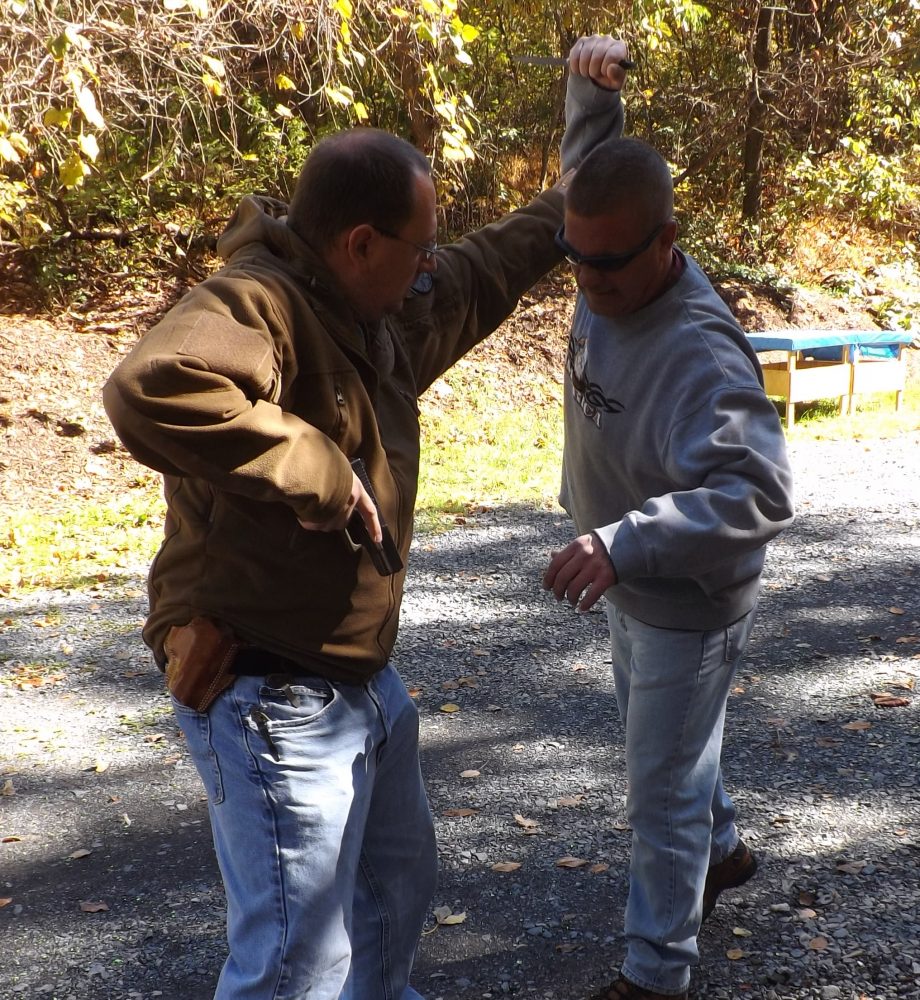
MYTH #5
“An attacker holding a knife in the reverse grip is very skilled.”
I have no idea why people believe this, but I’ve heard it time after time. Perhaps it’s mired in the perceived mysticism of some obscure art and therefore people think it is an exotic technique. The truth is that the attacker may be skilled, but it’s not solely because he chooses this technique.
A key point to realize is that anyone who is armed with a knife and willing to attack with it is a potentially deadly threat, whether it happens to be a teenager or the little elderly lady next door. The knife instantly makes it a deadly force encounter in many instances.
Now that we’ve examined some myths, let’s take a look at some facts.
OBSERVATIONS
According to the FBI Uniform Crime Reports, 1,694 people died from edged weapons attacks in 2011. From my firsthand observations working in a prison, stabbing is far more deadly than slashing attacks. I have never personally seen a person die from being slashed. I am not saying that slashing never kills, because it certainly does, but rather that it’s simply rarer that a person dies of slash wounds.
The likely reason for this is because with stab wounds, the blade penetrates into the body, hitting vital organs and causing internal bleeding. Of course, our organs are located internally, so slashing typically does not reach them. But arteries, such as the carotid and jugular, are very vulnerable to slashing attacks.
One factor that makes a knife-wielding attacker so deadly is he knows he’s going to attack us before we know it. And he knows where and how he will carry out the attack. Action beats reaction, and we find ourselves a step behind at the start of the action, as our brain and body both play catch-up, trying to make sense of what is happening.
To watch another person being stabbed or hacked up with an edged weapon in real life is terrifying. It is not clean like the movies portray it. People gurgle and scream as the blood flies, and human bodies tend not to smell very pleasant when they are opened up. Victims struggle desperately to live as their lifeblood pours out onto the ground. I can recall as if it were yesterday the first time I witnessed such a horror show—and I’d rather not be able to recall it. When cut or stabbed, people do not fall down and die. It takes some time.

RECOMMENDATIONS
If you carry a knife for self-defense, consider these factors. And merely possessing a knife (or gun or any defensive implement) does not mean you can effectively use it if attacked. Seek training in the use of your chosen tools. The mental stamina to prevail is by far the most important factor in any confrontation, and it must come from within.
The one tool that is vital to survival and may be the most important in your arsenal is vigilance. We can avoid more problems using our awareness than any other tool.
Always be mindful of those around you. Watch their hands, watch how they move, what they’re doing and how they’re doing it. If something doesn’t seem right, it probably isn’t.
Pay attention to your angle in relation to others and think about how you might move if they attack. Expect the unexpected! Make eye contact. Read people and their intentions—they give away more clues than they realize.
The author would like to give special thanks to Terry Ott for helping with the photos for this article.
Jim Davis has worked for the Department of Corrections in his state for the past 24 years, including in one of the largest prisons in the country for 21 years, 17 of those as a corrections officer. He served ten years in special operations on CERT, including sniper duty. He is an adjunct instructor at his agency’s state training academy and an instructor in various subjects for in-service training for his agency. He has been involved in numerous violent encounters on duty.


